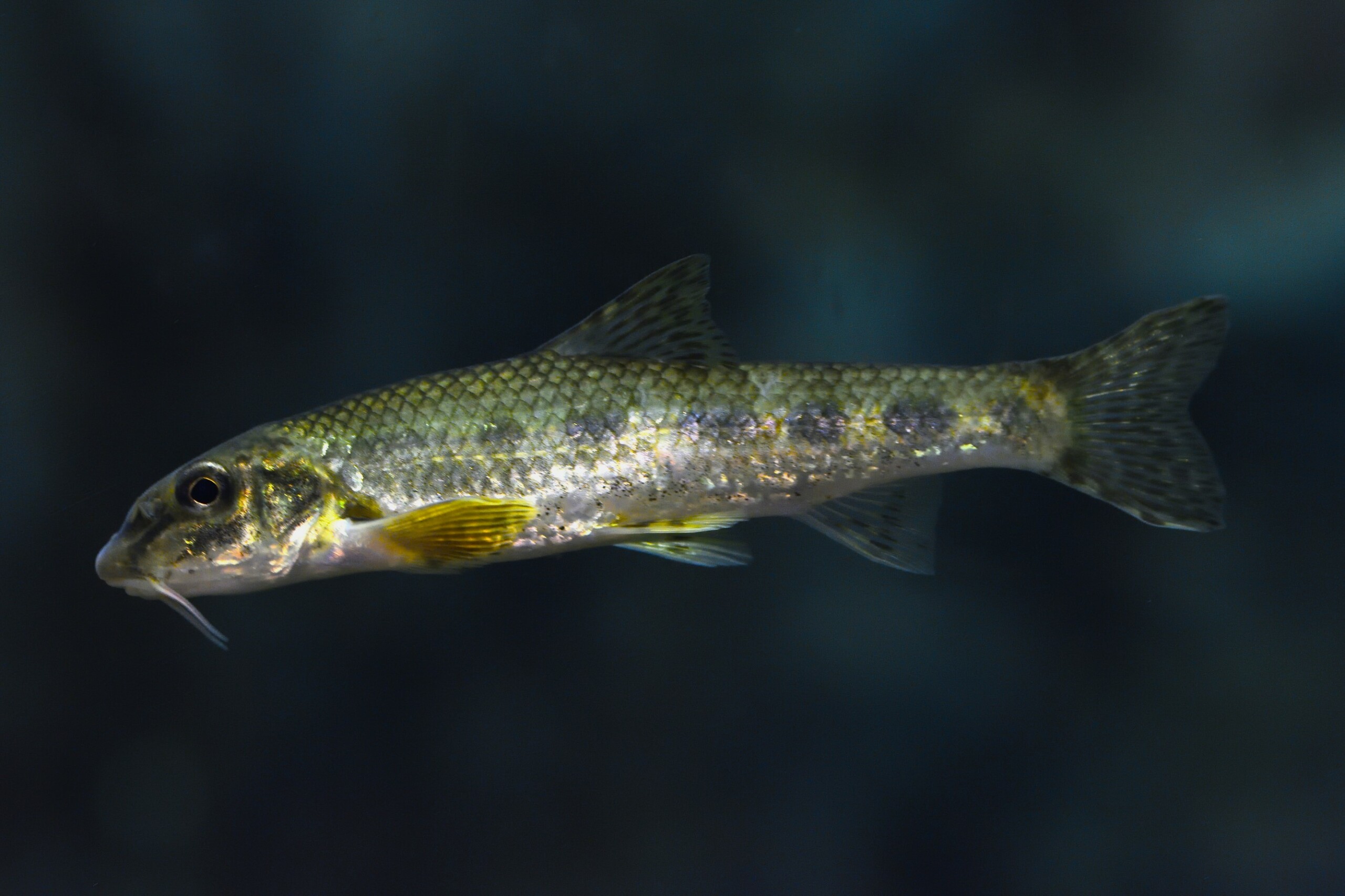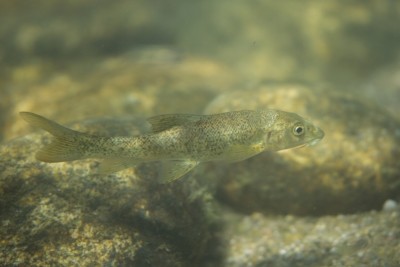Introduction
Gobio gobio is the most common species of gudgeon in Europe. It is a benthic fish that prefers clear waters with sandy and gravelly bottoms.
Who is it?
Morphology
-
Average size10 cm
-
Maximum size15 cm
-
Longevity5 year
-
ShapeOvoid
-
Mimicrysand
-
Patterntasks
-
Average size10 cm
-
Maximum size15 cm
-
Longevity5 year
-
ShapeOvoid
-
Mimicrysand
-
Patterntasks
How to recognize This fish ?
This fish has the particularity to possess several pairs of barbels, which allow him to search the bottom and to detect the food thus moved.
The common gudgeon has an elongated body. Its belly is flat and whitish. Its pectoral fins are quite broad and spread out, allowing it to cling to the bottom.
It has a pointed and narrow snout. Its tail fin is well forked. The body is grayish-green, speckled with brown on the back, sides, and fins. It is punctuated with seven to ten large dark spots on the sides, as well as seven to eight similar but smaller spots on the dorsal ridge.
The lateral scales are bluish in juveniles.
Sexual dimorphism
Behaviour & Life cycle
-
dietomnivorous with carnivorous tendency
-
Sociabilityliving in small groups
-
territorialNo
-
Way of livingdiurnal
This species is known to emit sounds easily audible by humans.
This gregarious species lives in communities near the bottom. It is a fish that continuously sifts through the substrate in search of benthic invertebrates (insect larvae, crustaceans, oligochaetes, mollusks).
It is generally active during the day but may delay its feeding period to darker hours if predators are present.
Reproduction
-
Reproductionovipare qui pond en eau libre
Gobio gobio is an oviparous fish that disperses its eggs in open water. When the temperature exceeds 15°C, from April to July, females lay very sticky 1.2 mm eggs that attach to the substrate as they fall.
Juveniles prefer slow currents on sandy bottoms rich in detritus.
Harmless species
This species does not represent any particular threats to humans when encountered in its natural environment.
Origin and distribution
What is its habitat?
Natural environment characteristics
-
Temperature2 - 18 °C
-
pH (acidity)7 - 7.5
-
gh (hardness)10 - 20
-
FlowStrong
Biotope presentation
As mentioned earlier, the gudgeon is generally found in areas with sand and gravel. However, it can also adapt to muddy bottoms such as canals and lakes. It is commonly found in the bream and chub zone.
Species of the same biotope
To go further
Sources & Contributions
Participation & Validation
The Fishipedia team and specialist contributors are committed to providing high-quality content. However, although the information comes from scientific sources or testimonials from specialists, the cards may contain inaccuracies.

Patrick Chartrer

Benoit Chartrer
Translation
Translation done with the valuable contribution of our translators, who make this information available to a wider audience. We sincerely thank them for their commitment.



























